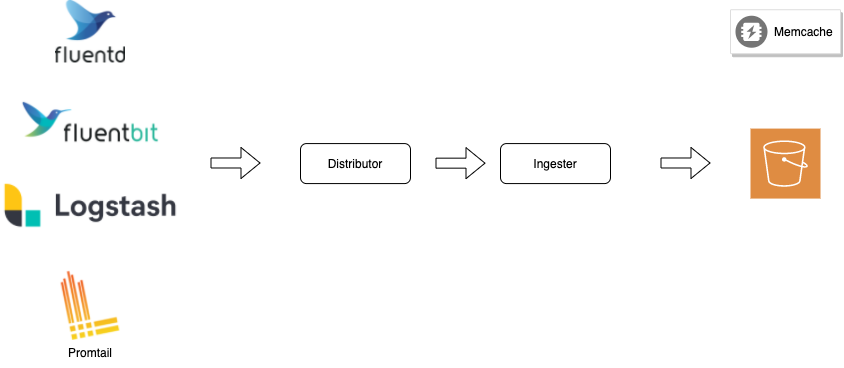Ingestion Process
Overview
In this chapter, I'll introduce the ingestion process of Loki to you.
You can get the following understandings.
The components to ingest
Ingestion mechanism
Log chunk buffering & flushing
Write-Ahead Log mechanism
Unordered logs and Orderered logs
Components for ingestion
Here are the components to ingest logs.
Fluentd, Fluentd Bit, Logstash, and Promtail are the clients for Loki, and Distributor and Ingester are Loki's components.
In addition, AWS S3 is a chunk and index storage and Memcache is a cache layer for them.
Let me introduce them in order.
Clients for Loki
These components collect logs from your applications and send them to Loki via Distributor's HTTP endpoint.
Distributor
This component has the responsibility to validate the ingestion requests and distribute them to appropriate ingesters according to the consistent-hash algorithm.
Ingester
This component has the responsibility to buffer logs on memory temporally and post logs to the storage engine like S3 and cache them to the chunk cache like Memcache or Redis.
AWS S3 as Storage Engine
The logs are stored here persistently.
This layer also supports Cassandra, GCS, DynamoDB, and the other products.
Here are the supported storage products.
Memcached as Cache
It is an optional component but very effective for query performance.
There are four types of cache in Loki.
You can know more details about it.
pageCache StrategyWrite Path
Write path overview is the listed.
The client sends logs to Loki's distributor
The distributor validates the post request and routes it to appropriate ingesters
The ingester validates the request
The ingester write it on WAL and buffers it into a memory chunk
The ingester flush the memory chunks to AWS S3
In further sections, let's dive into more detailed mechanisms.
Last updated
